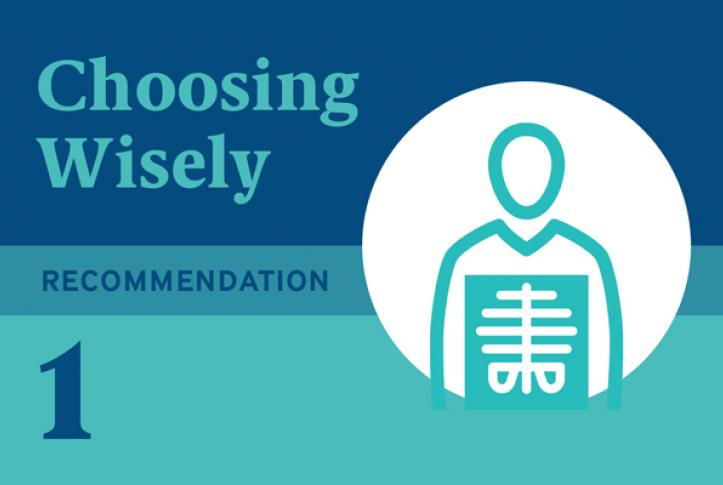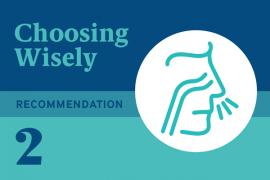Background
Eighty percent of all American adults seek medical evaluation for low-back pain at some point in their lives, and treatment costs are estimated to be about $85 billion per year in the U.S. Yet low-back pain often improves within about one month of the first appearance of symptoms through simple treatments such as applying heat, staying active, and taking over-the-counter pain relievers. Imaging tests to diagnose the source of low-back pain can lead to incidental findings and additional procedures such as surgery. Research has shown that patients who receive imaging for low-back pain are eight times more likely to have surgery than patients who do not. It also shows that surgery does not improve outcomes and can lead to complications that delay recovery.
Kelly Rand, a program officer for Choosing Wisely®, notes that a focus on reducing unnecessary imaging for low-back pain is challenging. Low-back pain often cannot be traced back to a specific cause. However, testing offers the possibility to clinicians and patients of some definitive information. Rand says that often there are “emotional drivers for doing this test, as patients and physicians struggle with the challenge of being uncertain of knowing what is wrong.”

The Innovation
In 2015, the ABIM Foundation, with support from the Robert Wood Johnson Foundation, awarded a grant to the Wisconsin Collaborative for Healthcare Quality to launch an initiative to decrease unnecessary imaging for low-back pain alongside interventions to address overuse related to three other Choosing Wisely recommendations. The collaborative included Froedtert & the Medical College of Wisconsin, a regional health system with three hospitals and 25 ambulatory centers.
Population Targeted
The low-back pain intervention implemented at Froedtert & the Medical College of Wisconsin was designed to reach primary care physicians, as well as other care providers who might be involved in ordering and analyzing low-back imaging, such as emergency department physicians and radiologists.
Key Features of the Innovation
The intervention includes five key elements:
- Providing physician education, including continuing medical education in small groups, with physicians making case-based presentations to raise awareness
- Collecting and sharing data on imaging ordering practices and developing an evidence-based care pathway for standardized spine care across disciplines, including pain management, primary care, and the emergency department
- Embedding the evidence-based care pathway in the electronic medical record, including a hard stop which requires clinical justification to proceed
- Offering patient education using materials from Consumer Reports about the harms of unnecessary low back imaging and strategies to manage and treat low-back pain.
Low-back imaging was reduced by 36% during the project period, with sustained results in the three years since the project launched in 2015.
Evidence of Impact
Key informants noted that low-back imaging was reduced by 36 percent during the project period, with sustained results in the three years since the project launched in 2015.
Sharing and Spreading the Innovation
The story of Choosing Wisely implementation at Froedtert & the Medical College of Wisconsin has been shared through presentations and webinars, and through the Choosing Wisely website.
Contact for Further Information
Kelly Rand, ABIM Foundation, [email protected]

